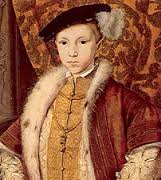Victorian Female Fashions
During the reign of Queen Victoria (1837- 1901), the fashion trends were changing rapidly. And for those who could afford new outfits regularly, this was a way to show off their wealth.
1830s
 The ideal body for a lady in the 1830s was a long, slender torso, accompanied by wide hips. The slimness of the torso was achieved by wearing tightly laced corsets made out of whale bone or iron. Some women laced themselves so tightly that many fainted and some women even broke a few of their ribs. Over the corset, they would wear a tight fitting bodice with a low waist. Women would have a long flowing skirt to emphasise their hips, worn over a horsehair petticoats to create the fullness of the skirts.
The ideal body for a lady in the 1830s was a long, slender torso, accompanied by wide hips. The slimness of the torso was achieved by wearing tightly laced corsets made out of whale bone or iron. Some women laced themselves so tightly that many fainted and some women even broke a few of their ribs. Over the corset, they would wear a tight fitting bodice with a low waist. Women would have a long flowing skirt to emphasise their hips, worn over a horsehair petticoats to create the fullness of the skirts.
1840s
 Low necklines, V shaped bodices and fuller skirts was popular along with dropped sleeves. The bodice stopped at the waist line ending in a V. The sleeves wear tied tightly at the top but they then expanded at the wrist and/ or elbow. Because this restricted movement, the mid- 1840s saw the sleeves change to become funnel shaped. Crinolines were also introduced creating a vast circular skirt. The flamboyant style of the previous decade got the 40s described as 'Gothic'!
Low necklines, V shaped bodices and fuller skirts was popular along with dropped sleeves. The bodice stopped at the waist line ending in a V. The sleeves wear tied tightly at the top but they then expanded at the wrist and/ or elbow. Because this restricted movement, the mid- 1840s saw the sleeves change to become funnel shaped. Crinolines were also introduced creating a vast circular skirt. The flamboyant style of the previous decade got the 40s described as 'Gothic'!
1850s
 The shape of the fashion remained the same in the 1850s as it was in the 1840s but the necks dropped into a low V shape, which meant women had to use a new garment to cover the exposed skin on their upper chest because of the idea of their skin being on view to the public was considered to be scandalous! The size of the crinolines increased and began looking like a dome. Bright colours were also become fashionable due to the discovery of synthetic dyes!
The shape of the fashion remained the same in the 1850s as it was in the 1840s but the necks dropped into a low V shape, which meant women had to use a new garment to cover the exposed skin on their upper chest because of the idea of their skin being on view to the public was considered to be scandalous! The size of the crinolines increased and began looking like a dome. Bright colours were also become fashionable due to the discovery of synthetic dyes!
1860s
 The shape of the crinoline changed slightly because the size at the top decreased whereas the bottom remained as full as the decade before! The front also became flatter and a train began to emerge at the back.In 1868, the crinoline was replaced by a bustle, a horse hair stuffed sort of cushion which was attached to the lady's behind to make it seem larger! Sleeves also became very loose and hung around the wrists.
The shape of the crinoline changed slightly because the size at the top decreased whereas the bottom remained as full as the decade before! The front also became flatter and a train began to emerge at the back.In 1868, the crinoline was replaced by a bustle, a horse hair stuffed sort of cushion which was attached to the lady's behind to make it seem larger! Sleeves also became very loose and hung around the wrists.
1870s
Slowly, crinolines were abandoned altogether. Bustles were now the craze because women wanted a slimmer figure with no wide skirts. By 1874, skirts had began to taper at the front and were starting to become embellished by ribbons, bows and the like. Sleeves became tighter around the wrists again. In 1877, people wanted their clothing to fit a moulded figure.
1880s
 This was an era of confusion among the fashionable societies because movements were occurring which embraced the natural figure and rejected the tight lacing corset! On the other hand, bustles reappeared and a dress included a front panel. Necklines were higher and the sleeves became tighter. At the same time, 'semi- masculine' outfits were tailored for women who enjoyed fashionable sports such as tennis and cycling!
This was an era of confusion among the fashionable societies because movements were occurring which embraced the natural figure and rejected the tight lacing corset! On the other hand, bustles reappeared and a dress included a front panel. Necklines were higher and the sleeves became tighter. At the same time, 'semi- masculine' outfits were tailored for women who enjoyed fashionable sports such as tennis and cycling!
1890s
By the 1890s, the skirt was no longer supported by a crinoline or bodice but flared out of the wearers waist. It became the shape of a bell. Large sleeves that were peaked at the shoulder soon required cushions to keep them in place. And corsets were laced tighter to ensure a tiny waist!





Comments
Post a Comment